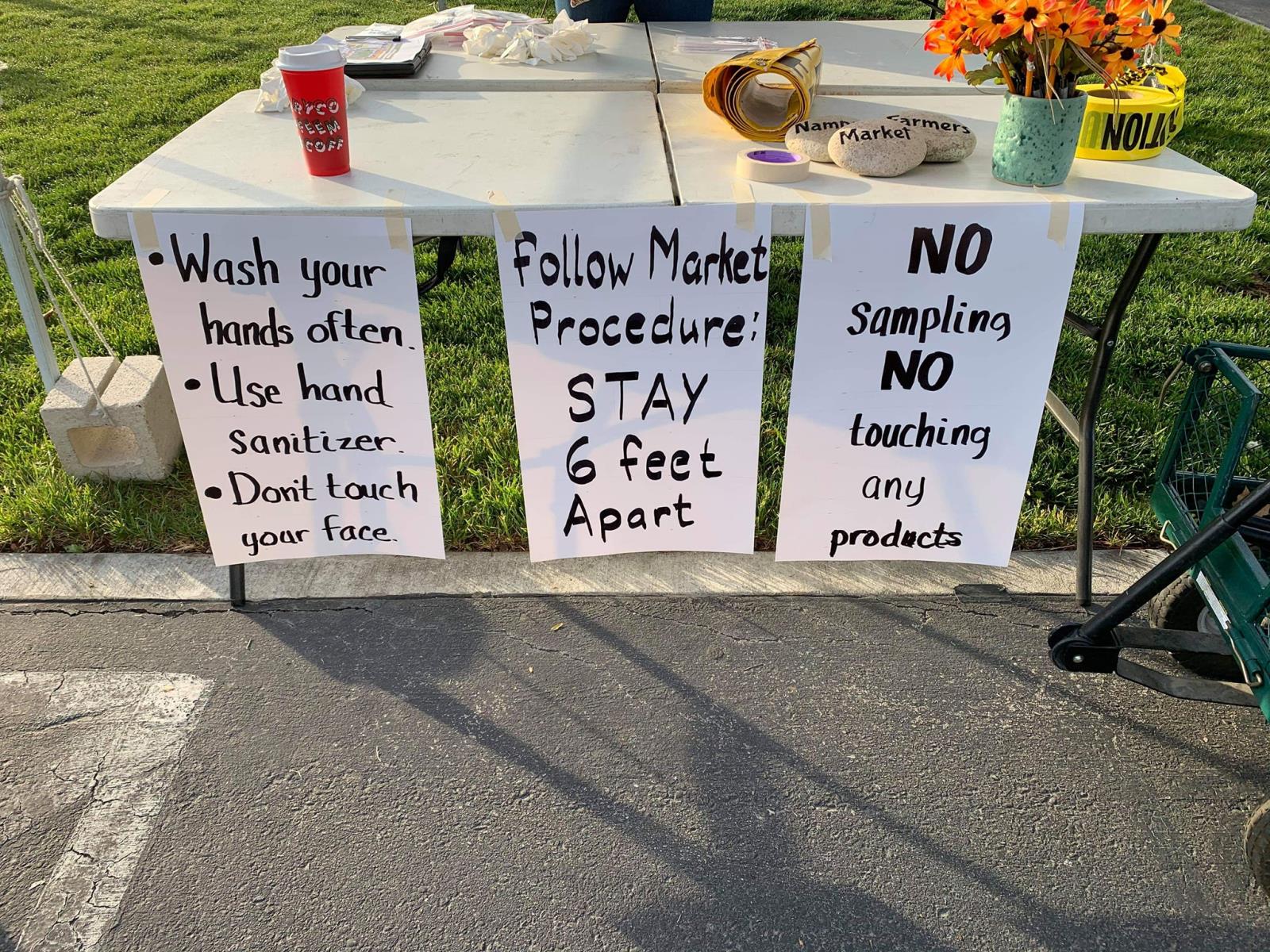Farmers markets begin opening, with an emphasis on safety

By Sean Ellis
Idaho Farm Bureau Federation
POCATELLO – Farmers markets around Idaho have begun opening for the 2020 season, but it will be far from business as usual at these outdoor markets that are an important income source for many small farms around the state.
The Boise Farmers Market opened April 11, one week later than it had originally planned, but without the thousands of people who typically flock to the market each Saturday.
The BFM is currently operating only as a drive-through market that allows people to pre-order online and reserve a time where they can pull up in their cars, pick up their order and leave.
The Saturday market still has its usual 9 a.m. to 1 p.m. hours but now, instead of consumers browsing through the market, automobiles roll into the parking lot every 15 minutes, have their pre-ordered products delivered to their cars, and then drive off.
Vendors drop off their products and volunteers sort them and get them ready to be picked up.
“It took us one and a half weeks to set the system up and it took us three weeks to get it right,” said BFM Manager Tamara Cameron. “People have really liked the ability to just come and pick up their order. I think we’ll figure out a way to continue it once things get back to normal.”
The market started with 400 orders the first Saturday and then had 500 during its second week.
“If all goes well, we’ll add another 100 this week and our goal is to ramp up to 1,000 orders,” Cameron said.
The Nampa Farmers Market kicked off the season April 18 with what NFM board member Barbara Whitbeck called a “soft opening.”
“It was way scaled back from what it normally is,” she said.
The market included only vendors who sell items people would normally find in a grocery store, such as produce, meat, eggs, baked goods, etc.
The market was limited to 10 vendors during its first Saturday and will have 16 during its second week. As the area allows for vendors and customers to follow social distancing guidelines, that number will slowly be increased, Whitbeck said.
Vendor booths were kept a good distance apart, masks were provided to people who wanted one and there was no music and no ready-to-eat foods or seating areas.
A drive-through option was provided for people who wanted to pre-order products.
“We made less money than we normally do on opening day but it wasn’t that bad,” Whitbeck said. “Everybody was sad that we couldn’t do things as normal – the market really is a social event – but they were glad that we could at least do something.”
Many of the state’s other 40 farmers markets typically open in May or June and they are waiting and watching and trying to develop plans, Ariel Agenbroad, a University of Idaho Extension educator for food systems and small farms in Ada County, told Idaho Farm Bureau Federation in an email.
She said some “have been reaching out to us and to the (Idaho Farmers Market Association) for input, to talk about ideas, etc.”
“There is no one-size-fits all, easy approach for a market or a community but we do know that it won’t be business as usual,” Agenbroad said.
Cameron, who is a member of the IFMA’s board of directors, said she has not heard of any market around the state that doesn’t plan to open this year.
“Everybody is doing it a little differently,” she said. “I think there will be different iterations around the state … that they have figured out work for their community.”
Cameron and Whitbeck both said customer and vendor safety is their market’s main priority.
The NFM plans to slowly increase its number of vendors “but we want to make sure each step we take is done safely,” Whitbeck said. “The priority is obviously the safety of people.”
Cameron said the BFM will continue with its current online pre-ordering system “until our customers and also our vendors feel safe to be back on the lot. Safety is our biggest concern.”
Agenbroad said the market managers and vendors she has talked to are deeply concerned about the health and well-being of their communities and vendors as well as providing access to fresh, locally grown food.
“We’re all working to figure out how to do this in the safest way possible,” she said. “Farmers are the most creative and optimistic people I know, so I’m optimistic, too.”
Still can't find what you are looking for? Find by topic:
- County Presidents & Board Information
- County Resource Page
- Delegate Form
- Discount Programs
- Discussion Meet
- Discussion Meet - High School
- Education Programs
- Events
- Excellence Award (YF&R)
- Expense Voucher
- Flickr
- Gem State Producer
- High School Discussion Meet
- High School Speech Contest
- Hope in Idaho Ag
- House of Delegates Credentials Form
- IFBF Board of Directors
- IFBF Staff
- Insurance
- Issue Advisory
- Legislative Action Program
- Legislative Issues
- Library
- MAC Trailer
- Magazines
- Map My Benefits
- Member Benefits
- Member Discount
- Membership Application
- Mental Health Resources
- Mission Statement
- Moving Agriculture to the Classroom
- Newsletter Sign up
- News Releases
- News Room
- Open Range Law
- Photo Contest
Thank You to Our Partners









